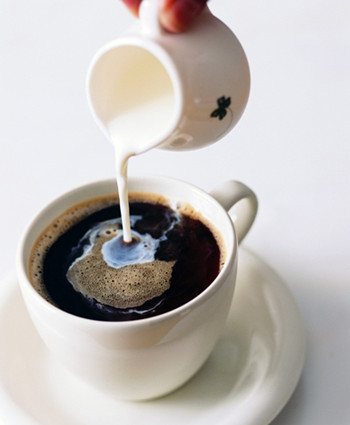Argentine Historical and Cultural legends in the Classic Coffee list
Buenos Aires, the capital of Argentina, is said to be a city with more cafes than Paris. There are currently 3250 coffee shops in Buenos Aires, which means there is one coffee shop for every 1000 people in the city. Argentine media wrote that the coffee shop is the load of daily life and historical heritage, it can not only be used for people to call friends and talk, but also can be used to be alone and reflect on themselves.
The Dodoni Cafe, the most representative coffee shop in the city, was founded in 1858 and was pioneered by French immigrants. The coffee shop was originally built on Esmeralda Street and moved to 825 May Street in 1880. The gate of the Dodoni Cafe facing May Street opened on October 26, 1894, which was also designated as Coffee Day in Argentina.

Famous cafes are always associated with literature and art, and Dodoni Cafe is a typical one. For a long time since its establishment, it has been a meeting place for famous Argentine artists, writers and literati. The photos and portraits of celebrities can be seen everywhere on the walls of the cafe. Artists discuss art in cafes, recite novels and poems, and play new works of music, making Dodoni's brilliant journey of talking and laughing for a century and a half. Dodoni Cafe has been the first choice for tourists to visit the city since 1893.
Perhaps it is worth mentioning that a small cup of Gourdo coffee sells for 15 pesos in Dodoni Cafe, which is no different from many ordinary coffee shops in Buenos Aires. Dodoni does not show much aristocratic style in terms of price because of its fame.
The English coffee shop (cafe Britá nico) in Lesama is also related to literature. Many British soldiers fled to Argentina during World War I, and the British Cafe, which opened in 1928, became a meeting place for these British soldiers. During the Falklands War, Argentines removed the first three British letters from the restaurant's sign: "Bri" and turned it into a "Tanico" coffee shop, a name that continues to this day. After the Falklands War, Argentine writer Ernesto Sabato wrote the novel "about Heroes and graves" on the table of the coffee shop.
The Buenos Aires government attaches great importance to the protection and promotion of these famous coffee shops. In 1998, the city council passed a law to establish a list of classic coffee shops, and the selection committee is composed of city government officials, operators of these classic cafes, descendants of their founders, and nearby residents. For those old cafes and bars with unique design and cultural tradition, being included in the list means that their value has been recognized.
One of the three classic cafes selected this year, the San Bernardo Cafe, founded in 1912, is a symbol of the Crespo district. This coffee shop has been restricted to men for a long time. The men came here to enjoy the tango, but one of its owners was a woman, who was the only woman in the coffee shop at the time. In the early 1920s, the woman disguised herself as a man and played Bandonne in the coffee shop. She is the first female performer of Bandoonne in Argentina, Pakita Bernardo.
The San Bernardo Cafe in 1930 already had more than 20 billiard tables, which was one of the largest billiards rooms in Buenos Aires and a major billiards game venue. There is a club above the coffee shop that offers a variety of Argentine favorite games, such as bridge, dominoes and billiards, which Argentines still enjoy. The coffee shop has attracted many famous people, such as Carlos Gadell, Seredonio Flores, Genaro Esposta, Gingella Martin and so on. From the 1940s to the 1960s, the area of San Bernardo was the busiest part of the city, and many writers and politicians were associated with the San Bernardo Cafe.
Laura, the hostess of the San Bernardo Cafe, which is now run by an elderly couple, said the cafe was so crowded that the coffee shop seemed to have become a part of her life. She and her 77-year-old gypsy husband have lived next to the coffee shop for 50 years, and their house has been renovated several times.
The Gloria Argentine Club is the first club in Buenos Aires with a famous coffee shop, the son of one of the founders of the club, Sergio Tour is proud to be selected as the Classic Cafe. The club was completed in 1941 and the coffee shop opened in 1942. At that time, the club had 1700 members who came to the club to enjoy the tango and revelry all night. The club has been a famous tango venue in Argentina for decades until a torrential rain damaged the dance floor in April 2012.
The Gloria Argentine Club is a legend of the Argentine tango dance floor. Tango masters such as Oswaldo Pugleser, Anibar Troilo and Astol Piazola have been here for a long time, and they are all divine beings for Argentines and Argentine tango. Famous dancers such as Sandro, who is also regarded by Argentines as the god of tango, are also regulars here.
Historical photos kept by the club record items such as gramophones donated by local residents. Nestor Miranda, a 60-year-old resident, said it is the most important cultural site in western Buenos Aires and is a large family of hundreds. He said that almost every night there are cultural activities, tango and singing courses, coffee literature salon, movies, performances and so on, and the dishes here are also very rich. People come here as if they were at home.
Another classic mailbox cafe, which was selected this year, is located on a street corner in Pompeia, which opened in the 1930s and was a school before that. Homero Manz, a famous Argentine tango lyricist, was a student of this school from 1920 to 1923. The entrance to the coffee shop used to be the school dormitory, a room with a view to the south of the city. Homero Mantz's works reflect the impressions of life, and Manz's immortal tango masterpiece "White hands" was born on this street corner. "White-handed" was once known as "the great landmark of Buenos Aires".
Greg O'Pronik, 75, founded the Mantz Museum directly opposite the mailbox coffee shop to make the world remember the tango master forever. Alduro, the 57-year-old owner of the mailbox coffee shop, has been running mailboxes for 20 years. Alduro said that this is an inconspicuous coffee shop, the main guests are the surrounding office workers, but some neighbors are his regulars. "some people come here every day and use this as an office, a club. A coffee shop is the most important thing in the community, more important than a drugstore. "
There are a large number of coffee shops in Argentina, like mailbox coffee shops, located on the corner of two streets, which can be aptly called "coffee corner". The coffee shop is not only a part of the owner's life, as Laura, the hostess of the San Bernardo Cafe, said. In fact, the coffee shop is almost a part of the lives of all the residents of the city.
For many Argentines, it is an indispensable joy in life to sit for a while in a roadside cafe after work and enjoy the leisure time of sunny and fragrant coffee. The coffee life of Argentines also reveals their slow, step-by-step attitude towards life. Like the neighbors of the mailbox coffee shop owner Alduro, there are often familiar coffee shoppers who come to the same coffee shop at the same time every day. People even see the same dog running past the table at the same time, it seems because its owner chooses the same time to walk the dog every day.
As a result, the more popular coffee shop chain has occupied a place in the cloth market. The Martinez coffee shop chain and the Havana coffee shop, which also operates the chain, are familiar brands. Of the 3250 coffee shops in Buenos Aires, 75 are listed on the list of classic coffee shops in Buenos Aires. The Bushi Coffee Bar Association believes that in the face of the impact of large chain operations, some traditional coffee shops appear vulnerable. There used to be more classic cafes in Buenos Aires, but 10 have closed, the latest being La Corunia, which closed earlier this year.
Once included in the list, these famous coffee shops will become cultural tourist attractions recommended by the city government, and coffee shops will receive an annual sum of money for repair and maintenance. In 2012, the cost was 200000 pesos per store. Entering the list is not once and for all, the classic coffee shop must maintain its traditional social image, architectural style and decorative style, otherwise it will be removed from the list. A coffee shop called "Chinese" in Pompeia district has been disqualified as a classic coffee shop.
Hernan Lombarti, the city's director of culture, stressed that the establishment of a list of cafes is also unique in the world, and that the tangible and intangible assets of these cafes have become part of the Buenos Aires tradition. It is comparable to Vienna, Paris and New York. The city government is striving for UNESCO to list the coffee shop as an intangible heritage of mankind. Whatever the future of this effort, the tradition of coffee will last for a long time among Buenos Aires residents.
Important Notice :
前街咖啡 FrontStreet Coffee has moved to new addredd:
FrontStreet Coffee Address: 315,Donghua East Road,GuangZhou
Tel:020 38364473
- Prev

Coffee you don't know, fortune teller, Turkish coffee.
Coffee divination, also known as "Greek coffee divination" or "Turkish coffee divination", is also popular in countries once ruled by the Ottoman Turkish empire. The origin of coffee divination due to the continuous disputes between Turkey and Greece before, so if you come to Greece, don't say you want a cup of Turkish coffee, otherwise you will get two.
- Next

The development of coffee culture in cafes in the office
Xavier Unkovic used to drink two cups of green tea in the office every morning, followed by a cup of coffee at noon. As global president of Mars Beverage, he found that most office workers, like him, have complex and diverse drinking habits in the workplace. Some people like coffee, some people like tea, and some people like hot chocolate, which has something to do with age.
Related
- How did the Salvadoran coffee industry develop in Central America?
- What exactly does the golden cup extraction of coffee mean?
- The Origin of Coffee flower
- [2023 Starbucks World Earth Day] there are more meaningful things besides free Starbucks coffee!
- What kind of coffee is there in Spain? 9 Flavors of Spanish Coffee
- Aromatic African coffee| Kenya's coffee culture and historical production area
- Liberica Coffee Bean knowledge: the characteristics of Liberian Coffee beans of the three original species of Coffee beans
- The origin and formula of Spanish latte introduces the taste characteristics of Bombon coffee in Valencia, Spain.
- How to adjust the solution of over-extracted coffee
- What is the tasting period of coffee beans? What is the period of coffee and beans? How should coffee wake up and raise beans?

